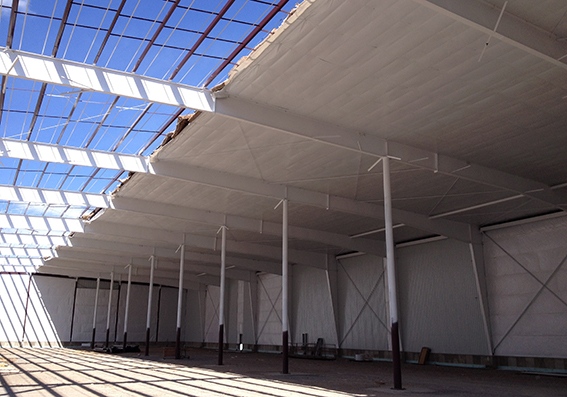Summer’s scorching heat can be relentless, especially in commercial settings where metal buildings become veritable ovens. The discomfort and energy costs associated with overheated spaces can damper business operations. However, a game-changing solution promises to keep your commercial space cool and energy-efficient – metal building insulation. This blog delves into staying comfortably cool during the hottest months using easy metal-building insulation techniques. From understanding the science behind insulation to exploring various types and installation methods, we’ve got you covered.
The Science Behind Metal Building Insulation
Before jumping into the practical aspects of insulation, let’s explore its science. Insulation works by minimizing the transfer of heat between two spaces. During summer, heat from the outside tries to make its way into your building, while air-conditioning attempts to counteract it. Proper insulation reduces the heat that enters, allowing your cooling systems to work efficiently and maintain a comfortable indoor environment. This is particularly crucial in commercial settings, where the well-being of employees, customers, and equipment can be compromised by excessive heat.
Types of Metal Building Insulation
- Reflective Insulation: This type of insulation incorporates reflective materials to bounce radiant heat away from the building. It’s ideal for roofs and walls, helping to maintain lower temperatures by reflecting sunlight.
- Fiberglass Insulation: Fiberglass insulation is a popular choice made from tiny glass fibers. It efficiently reduces heat transfer and is easy to install between metal framing members.
- Spray Foam Insulation: This type of insulation expands to fill gaps and crevices, providing an airtight seal that prevents heat and cold from infiltrating the building. It’s excellent for irregularly shaped spaces and can improve structural integrity.
- Rigid Foam Board Insulation: Often used in conjunction with other insulation types, rigid foam boards offer high insulation value and are moisture-resistant. They are commonly applied to walls, roofs, and floors.
Easy Installation Methods
- Roof Insulation: A significant portion of heat enters through the roof. Installing reflective insulation or a combination of reflective foil and fiberglass insulation directly under the roof panels can significantly reduce heat absorption. This method creates an effective barrier against radiant heat.
- Wall Insulation: For walls, fiberglass insulation can be inserted between metal studs during construction. Retrofitting existing metal walls can involve using rigid foam boards or spray foam insulation. These methods help maintain consistent temperatures and improve energy efficiency.
- Door and Window Insulation: Pay attention to the importance of well-insulated doors and windows. Weatherstripping, caulking, and double-glazed windows can prevent heat from seeping in and cold air from escaping.
- Attic Insulation: Insulating your metal building as an attic is crucial. Proper attic insulation prevents heat from accumulating and radiating downward into the building’s interior.
Advantages of Metal Building Insulation
- Energy Efficiency: A well-insulated metal building requires less energy to maintain a comfortable temperature, leading to reduced utility bills and a smaller carbon footprint.
- Enhanced Comfort: Proper insulation keeps indoor temperatures stable, creating a pleasant environment for occupants, whether employees, customers, or equipment.
- Extended Equipment Lifespan: Excessive heat can damage machinery and equipment. Insulation helps regulate temperatures, preventing overheating and extending the lifespan of valuable assets.
- Noise Reduction: Insulation provides a barrier against external noises, creating a quieter and more productive workspace.
Conclusion:
As the summer sun bears down on your metallic building company, implementing effective metal building insulation becomes essential to maintaining comfort and efficiency. You can take on the heat and win with a solid understanding of the science behind insulation, knowledge of various insulation types, and awareness of easy installation methods. By investing in proper insulation, you’re not only keeping your employees and customers content, but you’re also contributing to a greener, more sustainable future. So, embrace the power of insulation and enjoy a cool, productive summer season in your commercial haven.


